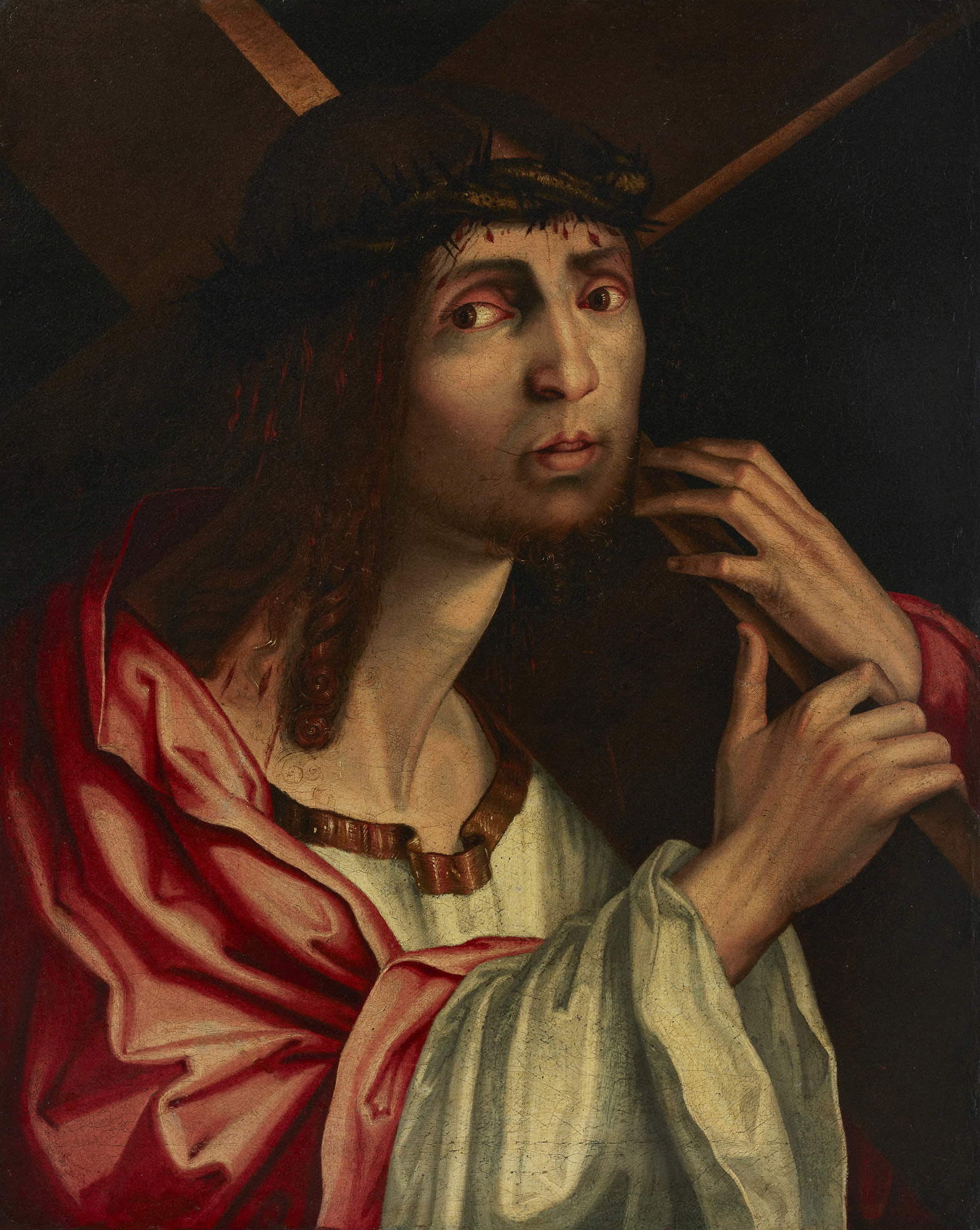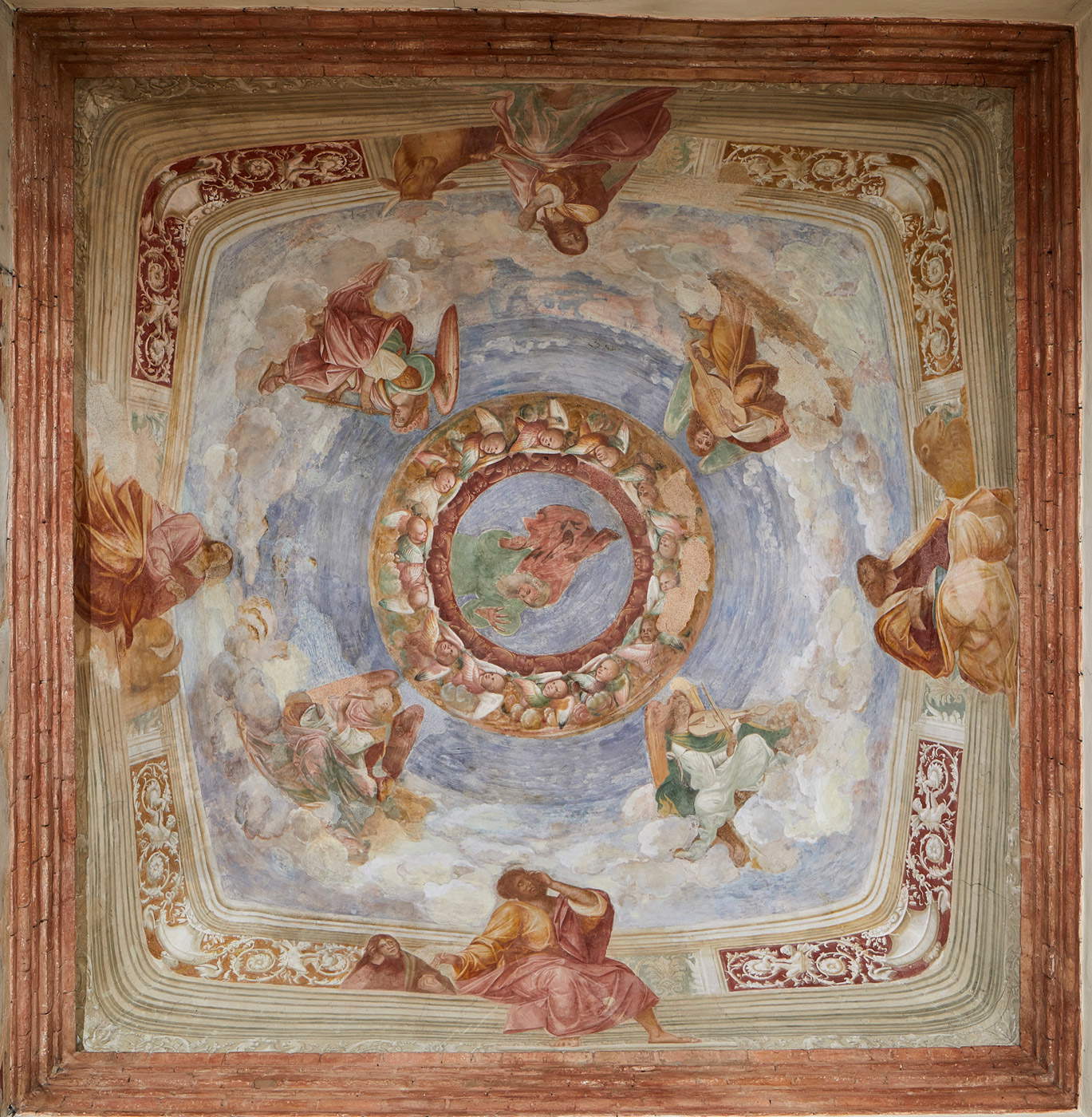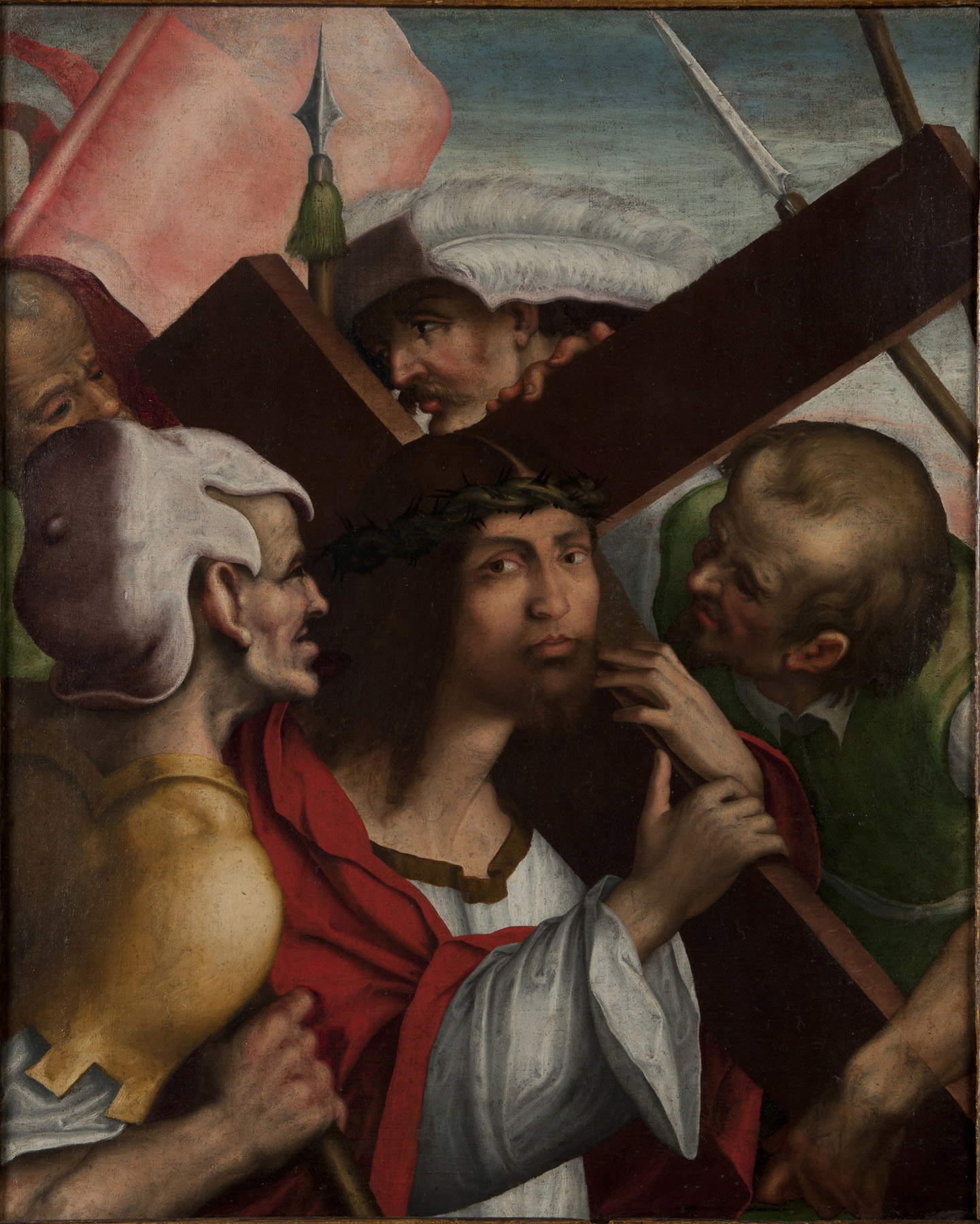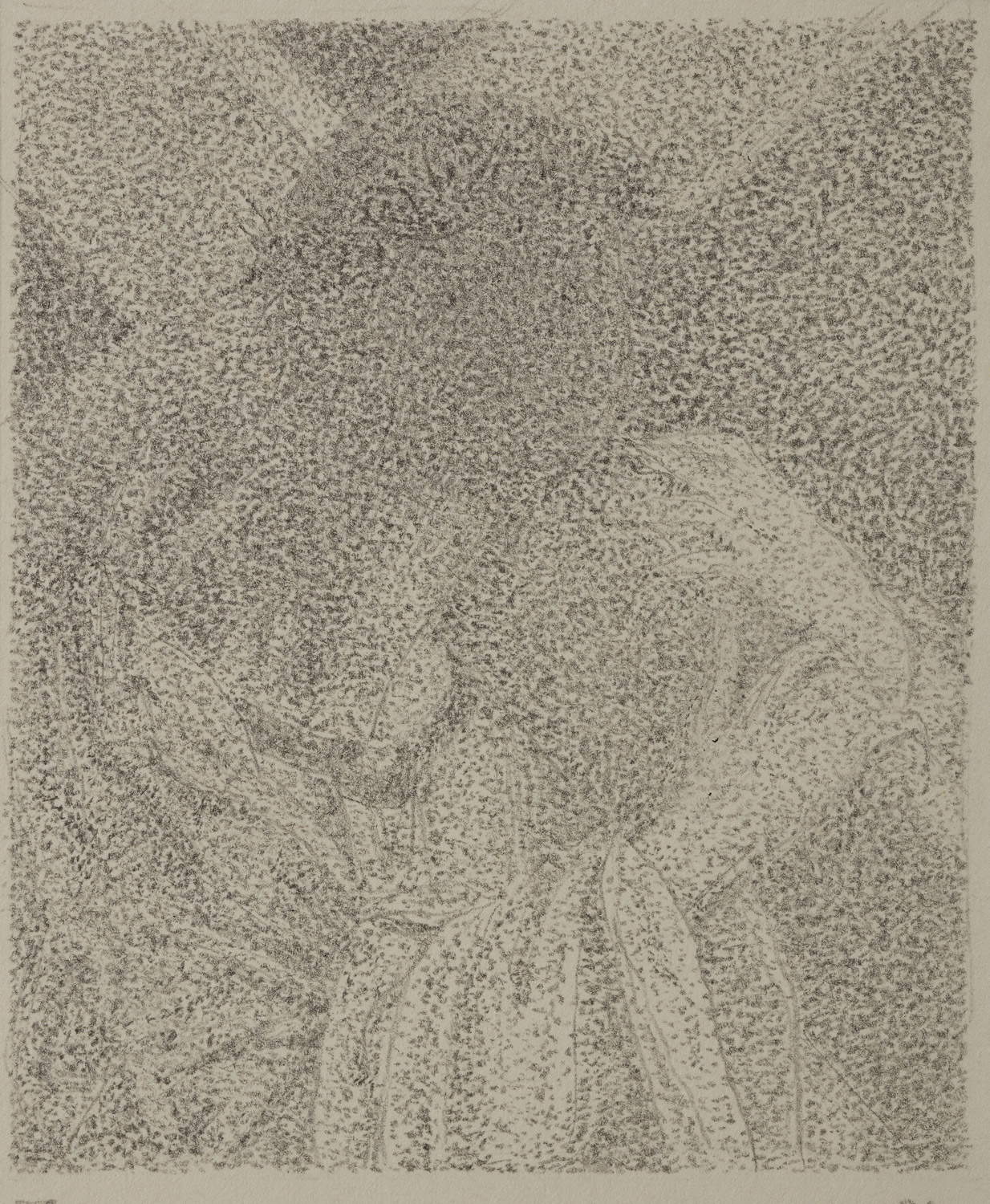It is a long-awaited return of painters Bernardino and Francesco Zaganelli to Cotignola. The recent acquisition of a painting, the first to enter the public collections of the Romagna town, allows the community to reclaim an identity lost for more than five centuries. An exhibition curated by Federico Settembrini and Raffaella Zama presents the work to the public with the singular title Novena: Bernardino and Francesco Zaganelli | Franco Pozzi - Nicola Samorì. Stories of a Christ Carrying the Cross acquired between ancient variants and contemporary meditations (Museo Civico Luigi Varoli, Palazzo Sforza, from December 11, 2021 to March 6, 2022, Catalogue texts by Massimiliano Fabbri, Alessandro Giovanardi, Giorgio Martini, Massimo Pulini and Raffaella Zama).
Raised in the small but noble castle of Cotignola, the two brothers are documented from the late 15th century. This was the time when the Sforza dynasty, which had been born here, had reached the height of its splendor thanks to the ambitions of Lodovico il Moro, and the castle, annexed to the Duchy of Milan, enjoyed a position of great privilege. In such a context, however by no means sufficient to justify such a wide-ranging education and, moreover, in a territory secluded from the dominant regional centers, Bernardino and Francesco emerged as the most fragrant flower of figurative culture grown in Romagna after the esoteric, theoretical, but less realizing Melozzo, as Roberto Longhi had to write in a fortunate passage in theOfficina. More realizing than Melozzo and less theoretical, the Zaganellis. Proof of this can be seen in the frescoes in the vault of the Sforzesca Chapel, admirably surviving wartime destruction in that “tiny capital of the Renaissance,” which was Cotignola, as Antonio Paolucci called it. Here they were able to fly higher, opening wide the measured Melozzesque spatiality to new openings. Openings that are not unlikely to have sparked in Correggio some ideas for the dome of San Giovanni Evangelista, as Giuseppe Adani noted in his latest Allegri monograph.
Francesco and Bernardino work symbiotically, and their works defy the connoisseur: while they seem to offer the possibility of distinguishing the difference in hand, the more they observe each other the more confusing they become, so much so that Longhi himself, after the attempt made by Gnudi at the 1938 Forlì exhibition, wrote, “they continue to seem to me like Siamese brothers.” Even when they work separately, in fact, between the Flemish executive delicacies and Bernardino’s Perugian atmospheres are grafted the expressive tensions and engraving features of Nordic memory of Francesco; just as in Francesco, Bernardino’s lesson will survive until his last breath.
The case of the Christ Carrying the Cross returned to Cotignola has its own uniqueness. The work replicates a fortunate model of which nine variants have so far been found, which focus the episode of the Ascent to Calvary on Christ’s face, as on a photographic close-up (a close-up) or a film frame: the painter’s optical camera lingers on the meekness of that suffering face, on the forehead marked by the crown of thorns, on the drops of blood, on the wide-open eyes ready to gather lattention of the viewer who is at one with the faithful, writes Alessandro Giovanardi, and continues the iconic lintention is given by the atmospheric rigor: the bare cross, grazed by a mysterious light, evoking the true thickness of the wood, and the background that veers toward a metaphysical darkness, denying all landscape detail, accomplish the perfect isolation of face and sign. Black, as in Bellini or Antonello, has the same function that Byzantine and Gothic possessed for them, and, which will later have the neutral haze of the seventeenth-century painters: a still chant, similar to a prolonged dormanic note or to the Gregorian from which a Nordic polyphonic chiseling departs. And, indeed, the fine fineness of the well-shaped hands, rendered to us in dramatic hues, the pallor and reddening of the skin of a body at the end of its strength, matches the livid, suffering look of the eyelids stoically holding back tears and, begging for mercy, actually distribute it with breadth toward the gazes and hearts of an uncrucified humanity, of a brutalization that the painter, as well as others do, does not show on that tried and tired but still, ultimately, fully beautiful face.






Three of the nine variants of the series confront each other for the first time in the exhibition: in addition to the one acquired, two come from private collections, one from Austria and the other from Forli. The exceptionality of the case, however, does not end there. At the time, Giorgio Martini recalls, it attracted the attention of Federico Zeri, who dealt with it in an essay published in Paragone, in which he noted how the Zaganellian specimen preserved at the Museo Nazionale di Palazzo Venezia (the first historically known piece among the nine), was found reproposed in a late 16th-centuryAndata al Calvario from the Musei Civici di Monza, which he returned to the Cento artist Giovanni Battista Cremonini. An unusual operation and considered by Zeri to be halfway between revival, symbolic collage and iconic reworking of a prototype still rather revered almost a century later. The painting, in fact, all plays out within the moment of artistic cohabitation of the two painter brothers, when it is still a contract of so-called fraternitas that governs their relationship. The company, in which Francesco is first intestate, will dissolve for unknown reasons around 1516 and the two will advance on separate paths, maintaining parallels and fraternal relations. TheMan of Sorrows returned to their homeland, bringing back to his skin the most authentic painted surface, as attested among the chiseled curls of his beard, a highly preserved hair that emerges from the left labial commissure toward the cheek. Punctuated by a slight and masterful flicker of color, it is the revealing detail of the Zaganellian koine, the flourishing of a Flemish microcosm in the most rugged Romagna.
And it is here, that the iconic image relives a new season by entering into dialogue with two contemporary artists, Franco Pozzi and Nicola Samorì, who mirror the painting in a long-distance confrontation by welcoming and relaunching its homecoming. Each seems to be setting up a different cenotaph, Massimo Pulini observes, and thus two funeral apparatuses in celebration of two eras and two authors unfold in Cotignola for a third-millennium Christmas. Pozzi’s paper sequence has an almost oriental nature, in the synthesis of technique and style, and transforms licona into an atomic trace left on the wall by the bomb of time. Only the sinopia of the work remains to us, the dusty holes of a preparatory cardboard that end up concealing in their own way the characters of the True icon. Samorì’s Christ, on the other hand, is inscribed in a material much older than wood, a slab of onyx that has blossomed into a crustaceous and crystalline geode, made of thorns and tears produced by the rock itself. Around that stigmata, the deepest Veronica of Mount Calvary, millions of years older than the same facts narrated, Nicola has reconstructed the body of Christ, as if it were painting playing the role of tumor on the operating table of history.
Massimiliano Fabbri, curator of the Varoli Museum, suggests that The title Novena, in addition to alluding to a practice of prayer and meditation, plays on the recursiveness of the number nine, which is also present in the exhibition itinerary. Nine are the known versions of the cross-bearing Christ and nine are the works in the exhibition. Three are the versions of the Zaganelli’s Christ. Five the drawings by Pozzi, as if still saving and singing the love for detail, and echoing the Nordic precision of the two brothers, at the long shadow of the German [Dürer of course]. One the painting by Samorì, where it is still time and ghosts, and a painting that challenges and contrasts loblio, saving pieces of the world, that recharges the images with meaning.
Warning: the translation into English of the original Italian article was created using automatic tools. We undertake to review all articles, but we do not guarantee the total absence of inaccuracies in the translation due to the program. You can find the original by clicking on the ITA button. If you find any mistake,please contact us.